When it comes to emergency services, the Philippines has a number of resources available to its citizens.
From police and law enforcement services to firefighting and rescue services, medical emergency services, and disaster response and management, there are different types of support structures in place for those who need assistance.
In this blog post, we will explore the different types of emergency services available in the Philippines, their challenges and opportunities, and the resources available to those who need help.
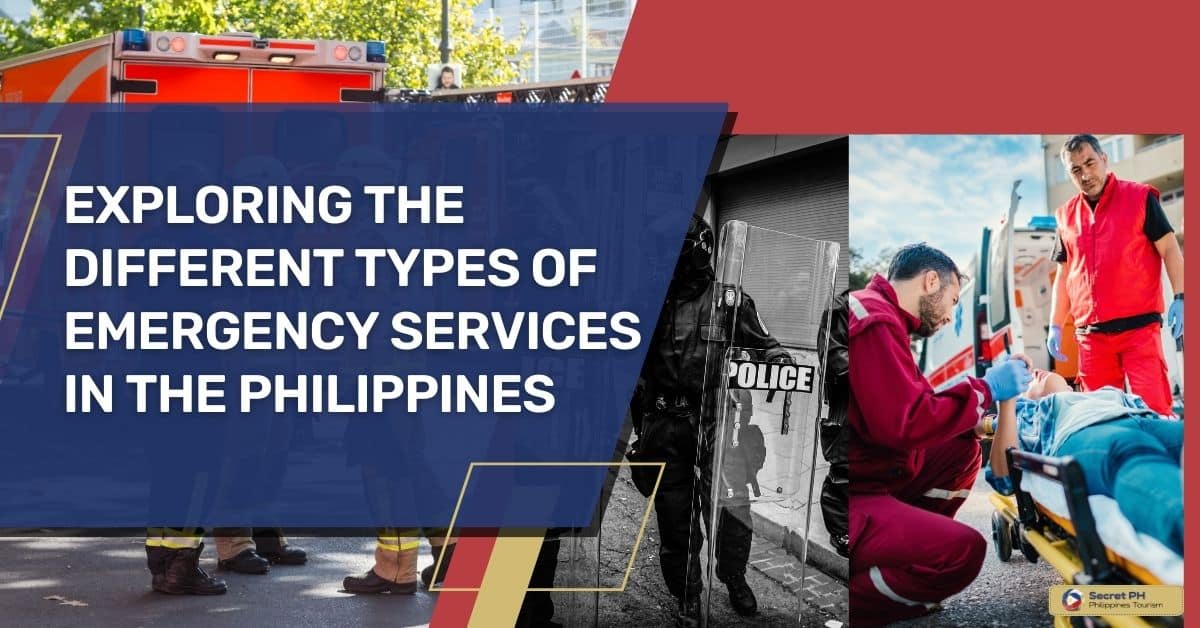
Police and Law Enforcement Services
Police and law enforcement services are essential for maintaining public safety in the Philippines. The Philippine National Police (PNP) is responsible for keeping order and enforcing laws nationwide. Various local police forces are tasked with patrolling their respective cities or towns.
Law enforcement officers have the authority to investigate crimes, interview witnesses, deploy resources and personnel, make arrests, and assist in court proceedings. However, there are challenges faced by the PNP such as budget constraints and a lack of personnel.
To address these issues, the Philippine government enacted the Police Reform and Reorganization Act of 2013. This includes measures to strengthen police forces nationwide by introducing new technologies and equipment. It also provides additional training, establishes a sound personnel management system, and introduces a more effective system of accountability.
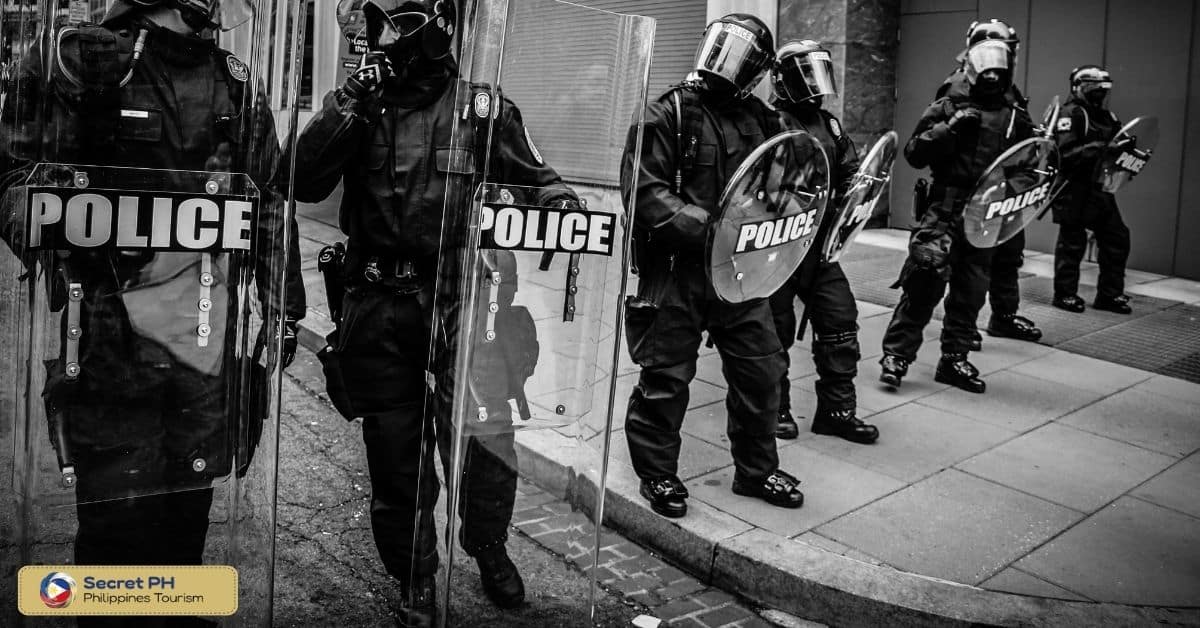
Medical Emergency Services
Medical emergency services are provided by a variety of organizations, both public and private in the Philippines. These include hospitals, clinics, and other healthcare facilities that can offer treatment for various types of ailments. These establishments also provide preventative care through regular health screenings and other services.
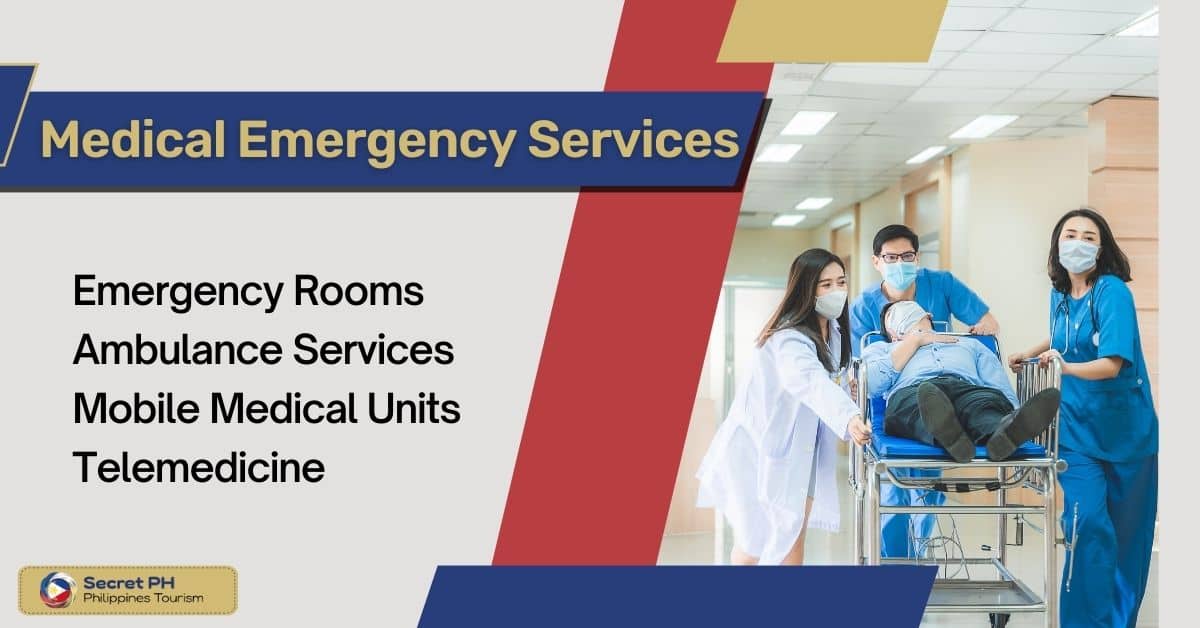
Emergency Rooms
Most cities and towns in the Philippines have at least one major hospital with an emergency room (ER). Staffed by doctors and nurses who are trained to respond quickly to medical emergencies, such as heart attacks or strokes. ERs provide treatment for a variety of ailments ranging from minor injuries to life-threatening ones.
Ambulance Services
Ambulance services in the Philippines can be deployed to provide emergency transport for patients who need immediate medical treatment or have suffered serious injuries. Ambulances can be equipped with a range of medical equipment and personnel. This includes paramedics and EMTs, and can be dispatched to the scene of an accident or medical emergency.
Mobile Medical Units
In addition to ambulance services, mobile medical units are available in certain areas of the Philippines. These specialized vehicles are designed to provide medical care in remote areas and during natural disasters, such as typhoons or earthquakes. They are usually staffed by trained paramedics and equipped with medical supplies and equipment.
Telemedicine
Telemedicine has been gaining traction in the Philippines as a way to provide medical services remotely. This technology enables doctors and other healthcare professionals to assess and diagnose patients from afar using digital systems such as smartphones, tablets, or computers. Telemedicine can also be used to provide medical advice and monitor the progress of a patient’s condition without having to physically visit them.
Firefighting and Rescue Services
Firefighting and rescue services in the Philippines are managed by local fire departments. They are responsible for responding to emergency calls and providing life-saving assistance. The Bureau of Fire Protection (BFP) is responsible for setting standards, regulations, and guidelines for fire suppression activities across the country.
The BFP also provides technical assistance to local fire departments in order to ensure they have the resources needed to respond to emergencies. The firefighting and rescue services in the Philippines face a number of challenges. This includes insufficient personnel and equipment, inadequate funding, lack of training, and an aging fleet of vehicles.
To address these issues, the government has implemented several measures such as mandating minimum safety standards for fire stations. They provide additional training and resources to bolster local fire departments and invest in new technology and equipment to improve response times.
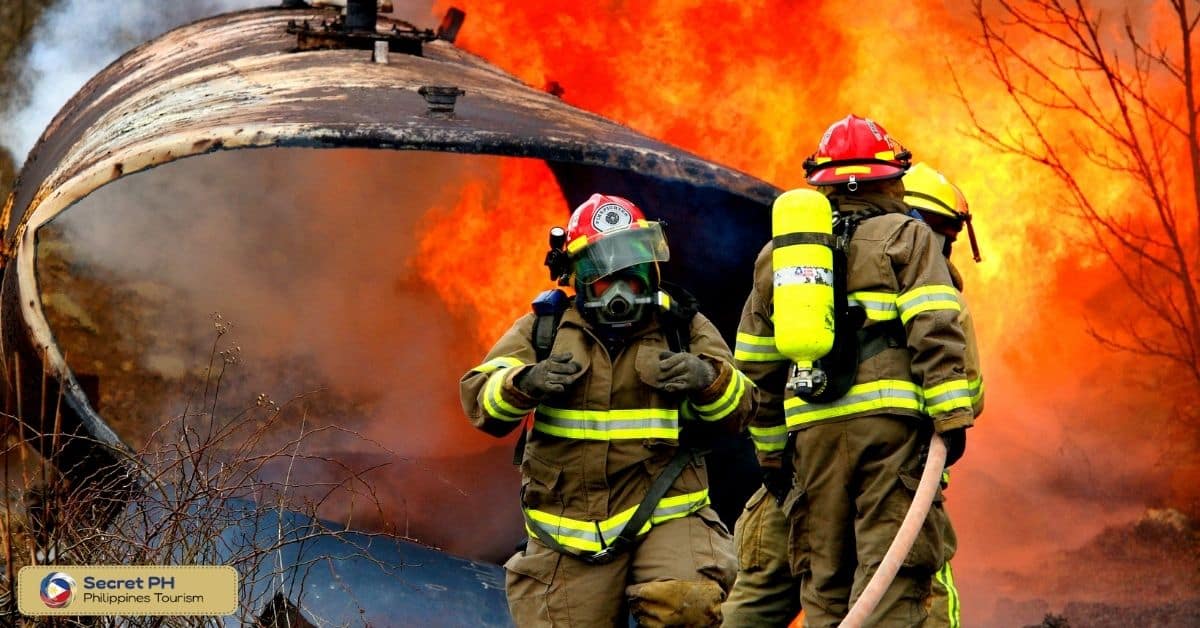
Disaster Response and Management Services
The Philippines relies on its disaster response and management services to provide relief and assistance when disaster strikes. The government has various agencies in place to coordinate emergency response efforts and provide support to affected individuals and communities. These organizations are tasked with responding to disasters such as typhoons, floods, earthquakes, and landslides.
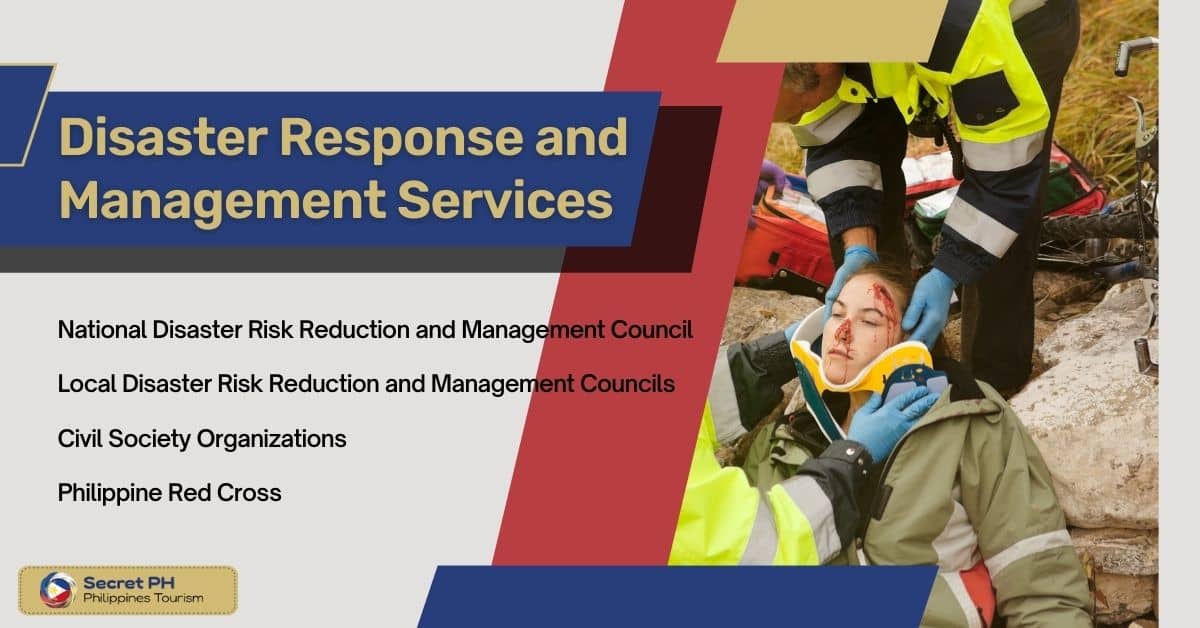
National Disaster Risk Reduction and Management Council (NDRRMC)
The National Disaster Risk Reduction and Management Council (NDRRMC) is the main government agency responsible for disaster response in the Philippines. It coordinates efforts across different agencies to ensure that resources are allocated effectively and efficiently during disaster operations. NDRRMC is in charge of distributing disaster relief funds and providing assistance to affected families and communities.
Local Disaster Risk Reduction and Management Councils (LDRRMC)
At the local level, there are Local Disaster Risk Reduction and Management Councils (LDRRMC), which are responsible for coordinating with municipalities and barangays during emergencies. These councils have the authority to deploy resources and personnel, such as search and rescue teams, medical personnel, and relief goods.
Civil Society Organizations (CSOs)
In addition to government agencies, civil society organizations (CSOs) also play an important role in disaster response and management in the Philippines. CSOs provide assistance on the ground by delivering medical assistance and distributing food and other basic necessities. They provide shelter and temporary housing and offer psychosocial support to affected communities.
Philippine Red Cross (PRC)
The Philippine Red Cross (PRC) is one of the most well-known CSOs in the country that provides disaster response services. It has a fleet of medical and rescue vehicles, a Disaster Management Training Center, a disaster relief warehouse, and an extensive network of volunteers. The PRC is in charge of managing emergency shelters and providing medical assistance to those affected by disasters.
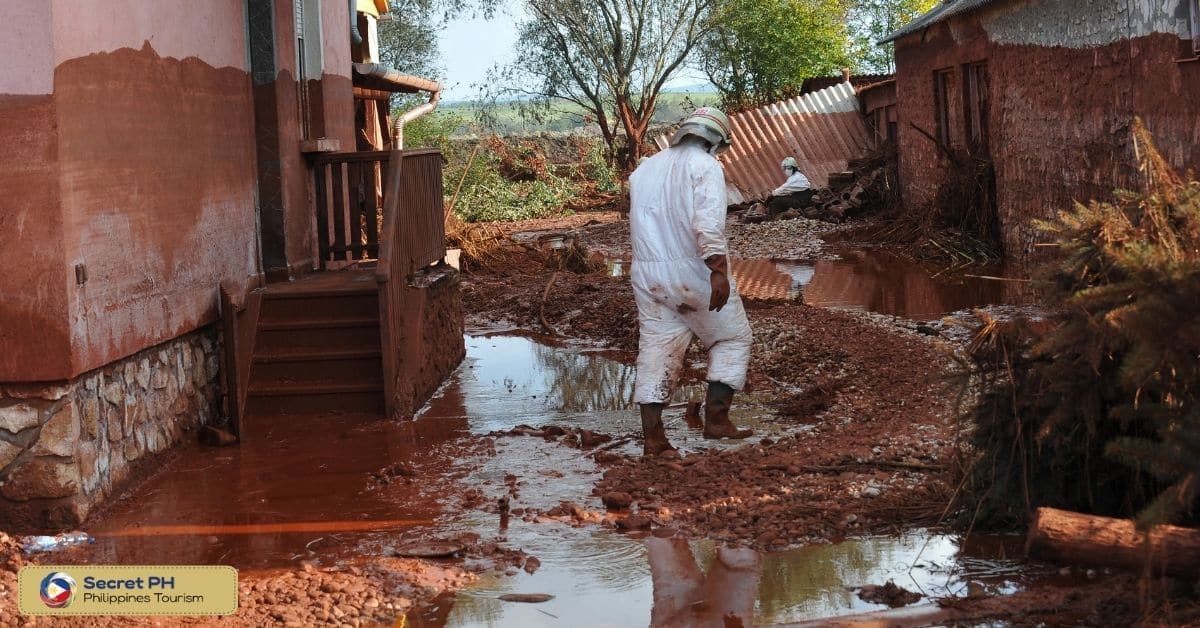
Other Emergency Services and Resources
Other emergency services and resources available in the Philippines provide citizens with access to help in times of need. From emergency text message services and hotlines to citizen patrol groups and safety apps, there are a variety of resources available to those who may be in need of assistance.
In addition to the services listed above, here are the other emergency services and resources available in the Philippines:
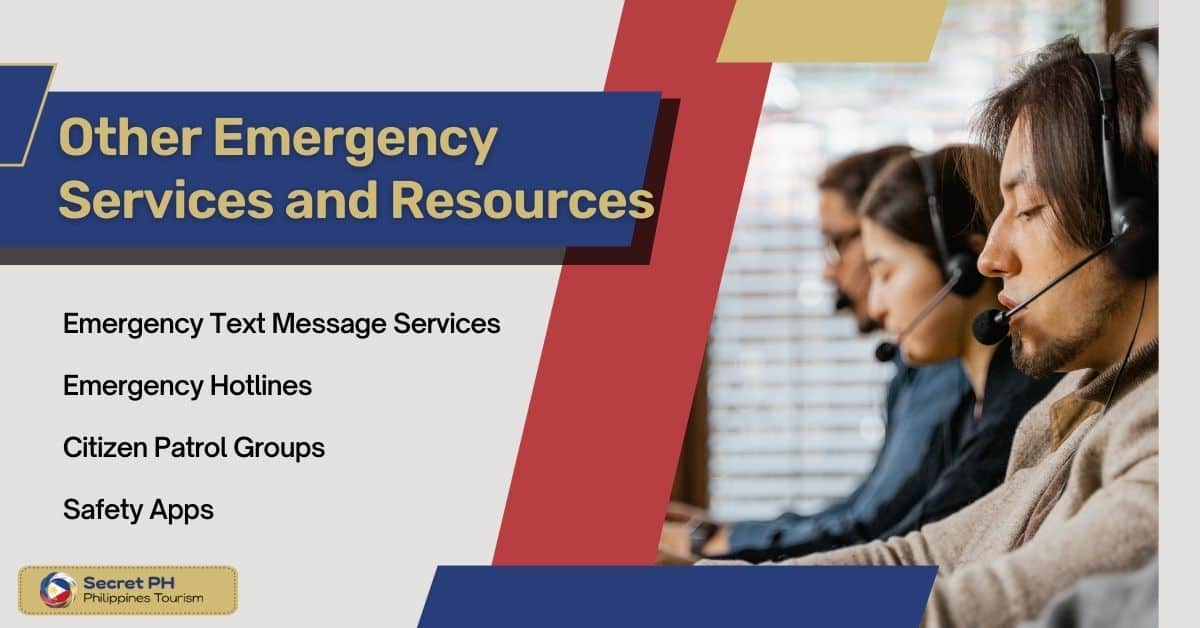
Emergency Text Message Services
Emergency text message services are available in the Philippines, allowing citizens to quickly and easily contact emergency response teams. This service provides citizens with a tool to alert first responders of an accident or other emergency situations. The messages sent via this service can include audio, images, and GPS coordinates that can help emergency personnel locate those in need of assistance.
Emergency text message services are available from a variety of providers. This includes government agencies, mobile phone operators, and private organizations. These services are typically free of charge and can be used in the event of any type of emergency.
Emergency Hotlines
Emergency hotlines are an important resource for those in the Philippines who are in need of assistance. These hotlines provide assistance for a variety of issues, including medical emergencies and natural disasters. The Philippine government operates two main emergency hotlines – 911 and 117 – which offer emergency services to citizens nationwide.
The 911 hotline serves as a general emergency hotline, while the 117 hotline serves as a nationwide disaster-relief hotline. Both of these numbers can be dialed from any mobile phone or landline in the Philippines and provide access to medical, police, firefighting, and rescue services.
Citizen Patrol Groups
Citizen patrol groups are volunteer organizations that provide assistance with public safety and emergency services in the Philippines. These groups generally partner with local and national law enforcement teams to help monitor activities and respond to any potential threats or disasters.
Citizen patrol groups are typically organized according to specific regions or cities. The members of these groups work together to ensure the safety and security of the community. They provide additional support to law enforcement by patrolling areas at night, organizing neighborhood watch programs, and providing assistance with disaster relief efforts.
Safety Apps
Safety apps are smartphone applications designed to provide users with access to emergency services and resources in the event of an unforeseen incident. These apps allow users to contact emergency personnel, post updates about their current location and receive alerts about nearby threats or disasters.
Many safety apps provide users with the option to create personal emergency networks that connect them with family members or friends who can help in the event of an emergency.

Challenges and Opportunities in the Provision of Emergency Services
In order to effectively provide assistance to those who need it, an understanding of these issues is essential. The following table outlines some of the key challenges and opportunities associated with providing emergency services in the Philippines:
| Challenges | Opportunities |
| Limited resources – Services such as police, firefighting, and medical emergency services are often stretched thin due to limited resources. | Increased investment – Increasing investments into emergency services will help ensure that they are adequately staffed and equipped. |
| Geographic constraints – Accessing emergency services can be difficult in rural and remote areas, leading to delays or lack of response. | Utilizing modern technology – Technologies such as AI and IoT can improve efficiency, reduce response times, and help ensure better coordination between agencies. |
| Lack of awareness – Poor knowledge about available services hinders effective utilization by the public. | Improved training – Better-trained personnel will be better equipped to handle emergency situations more effectively. |
| Limited coordination between agencies – There is a need for improved coordination between the various emergency services in order to better serve those in need. | Improved awareness of services – Making the public aware of available emergency services can help to ensure that they are effectively utilized. |
| Limited access to technology – A lack of access to modern technologies can limit the effectiveness of current emergency response systems. | Increased coordination between agencies – Improved communication and collaboration between emergency services can lead to more effective responses. |

In conclusion
Emergency services and resources play an important role in the safety and security of Filipino citizens. Despite some challenges, there are numerous opportunities to improve the provision of such services through increased investment, better training, increased coordination between agencies, and innovative approaches.
Ultimately, this will help ensure that everyone has access to the necessary assistance in times of need. Therefore, it is essential for government and public entities to continue exploring and developing strategies to further improve emergency services in the Philippines.








